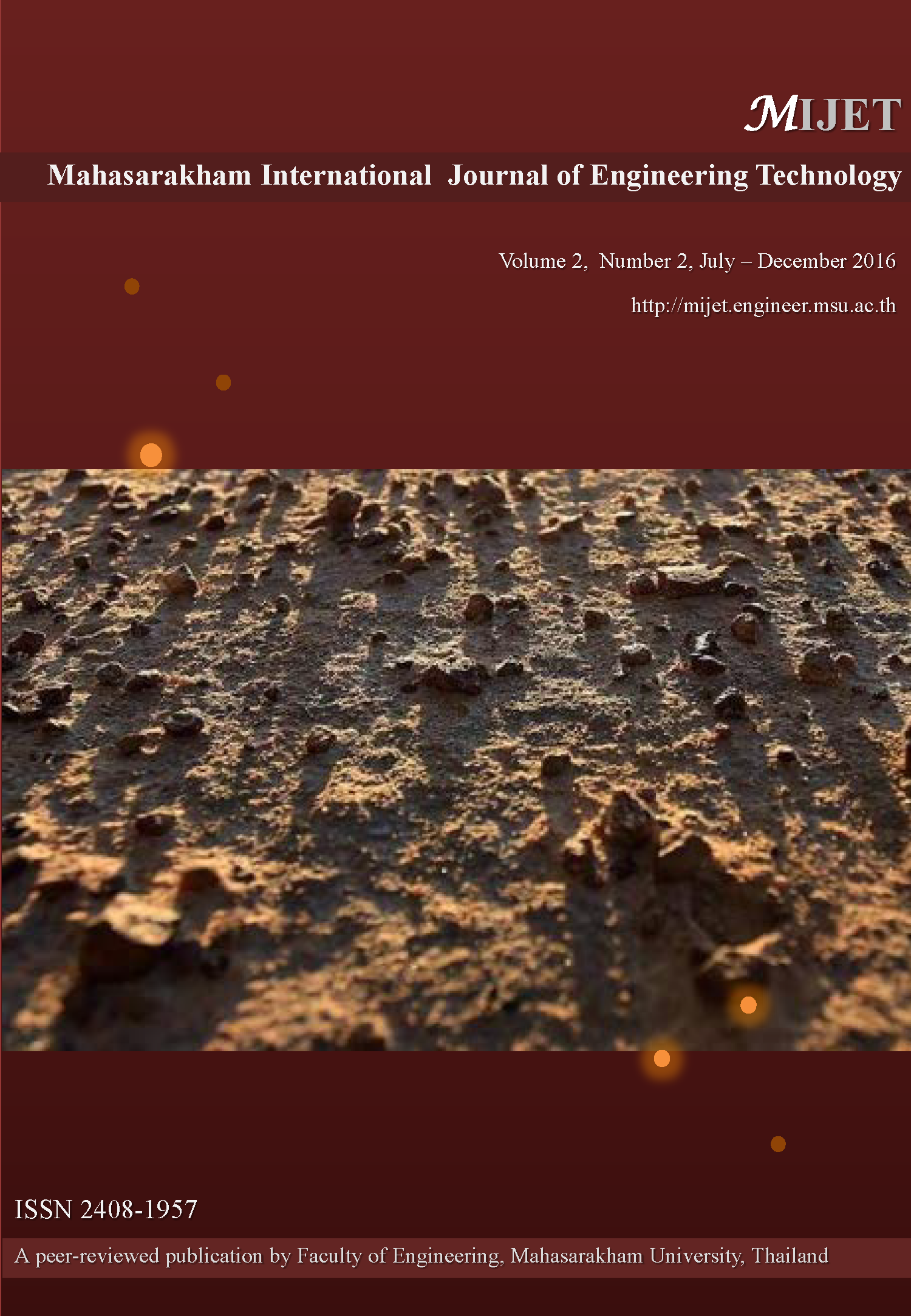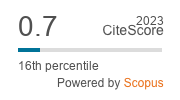Study on Beekeeping and Profit Investment Cost Analysis in Nakhon Pathom Province
doi: 10.14456/mijet.2016.10
Keywords:
apiculture, feeding of honey bee, compensation analyze, payback periodAbstract
In this study, effect of feeding period and feeding method on bee population and honey yield were investigated. Apiculture was done three boxes, six frame each. The 40% (w/v) sucrose syrup was fed to bees for 21 days and harvest honey once. It was found that syrup feeding with 1,500 mL syrup in tray everyday feeding, once a day gave honey after roast 1,353.28 mL per month per box. The viscosity was 5,350 cPand the sweetness was 110 ◦Brix.Physical honey quality was surveyed from sample people’s opinion, in NakornPathom. The satisfaction levels in taste and color were 73.3, 79.8 and 86.3%, respectively.
Beekeeping profit analysis on three years started by three hives, six frames each in the first year, increase to twenty-four hives and 72 hives in year two and three respectively, was as following: The first year investment cost was 47,464.80 baht with loss 19,595.20 Baht, the second year investment cost was 73,694.40 baht with loss 9,680.80 baht and the third year investment cost was 209,531.20 baht with profit 31,614.40 baht.
References
Officeof Agricultural EconomicsResearch, Department of Agriculture, (Online). Available:http://plantpro.doae.go.th/plantclinic/clinic/other/bee/index.html,2012.
Extension of Beekeeping and insect economy.(Online).Available:http://www.agriman.doae.go.th/home/news/June%202010/020_Bee.pdf,2013.
Department of Agriculture. (Online).Available:http://www.mol.go.th/statistic_01.html,2009.
Segeren, P. Beekeeping in the tropics.(5th Edition), Digigrafi, Wageningen,Netherlands,pp.90, 2004.
Ministry of Labour. (Online). Available: http://www.mol.go.th/statistic_01.html,2006.
Wanjai,C.Sringarm,K.Santasup,C.Pakuthai.S.andChantawannakul, P.Physicochemical and microbiological properties oflongan, bitter bush, sunflower and litchi honeys produced by Apismellifera in Northern Thailand. J. Apicultural Research, Vol. 51,No.1, pp. 36–44,2012.
Neupane, KR. Woyke, J. and Wilde, J. Effect of Initial Strength of Honey Bee Colonies (Apismellifera) Superedin Different Ways on Maximizing Honey Production in Nepal. J. Apicultural Science. Vol.56, No.2, pp.71-81,2011.
Aukoarathanagul, P. As with Bee and Beekeeping.(3rdEdition),Bangkok,Thaiwattanapanich prints companies,pp.182,1991.
Suksomboon, P. The integration of theCenterforthebeekeepinginUttaraditProvince,Thailand: Master's thesis, University of Agriculture, 1986.
Suarayawises, P. Cost analysis and return onbeekeepinginKhonKaen,UdonThani,NhongboalumphuandLoei. Master of Business Administration.DepartmentofInterdisciplinary GraduateProgram, Universityof Agriculture.2000.








